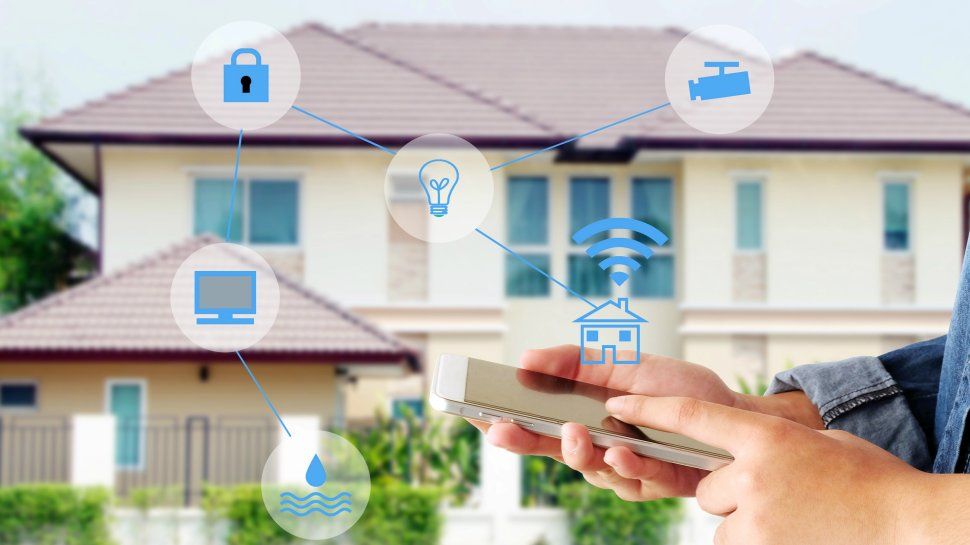
The smart home revolution is truly underway. With reality taking a little time to catch up to the hyperbole (femtocell-powered smart fridges, anyone?), it has now become the norm. In fact, according to a 2019 survey by Smart Home Week, 57 percent of UK homes are now equipped with some sort of smart device, and 45 percent of households are planning to make their homes even smarter in the future.
The demand for smart home technology is driving diversification in device categories – virtually any appliance you can think of comes in a connected variant today – and also opening up new ways in which advanced technologies like AI and 5G can be used to drive new consumer experiences.
The 5G impact
There a number of technologies driving innovation today but at the head of that queue is arguably 5G. Already it is opening doors for all kinds of consumer devices such as smartphones, tablets, laptops and everyday appliances. With 5G, all these devices will constantly connect and communicate with each other. Every new generation of cellular network promises faster speeds and that is certainly the case with 5G: potentially 40 times faster than the latest version of 4G. Super-fast connectivity is complemented by low-latency to offer instantaneous AI for a smart experience whether using a TV at home or voice assistant at work.
Smartphones are leading the way in this space purely through competitive differentiation: according to Strategy Analytics, Q1 2020 saw more 5G smartphones shipped than all of 2019. Smartphone manufacturers are now favoring unique chipsets that deliver enhanced 5G technology, power-efficiency and higher-quality frame-by-frame imagery for video and gaming, in order to meet the demands of users. This trend is undoubtedly making its way to other devices in the home including Smart TVs.
What will 5G mean for products like Smart TVs? TV broadcasting, especially when it comes to live broadcasts will be better than ever. Performance will improve massively which will be useful for more immersive Virtual Reality (VR) and 360-video content when watching things such as live sport. All this requires 5G’s combination of speed and low latency. MediaTek showcased some of these experiences by streaming an 8K video to a smart TV using 5G connectivity from the Dimensity chipset series. 5G will also drive advancements in voice-based computing, making machine learning a lot easier and their recognition and response times will be nearly instantaneous.
Tackling the dreaded lag
The smart home concept is predicated on the fact it makes the chores in life quicker and simpler. But how about when you can ask your voice assistant to turn on the kitchen lights or play your favorite song while you’re streaming Netflix on your Smart TV and suddenly your internet starts to lag? Having these incredible devices all working in tandem at home will inevitably use a large amount of Wi-Fi bandwidth. That’s where Wi-Fi 6 comes in to improve the user experience.
Wi-Fi 6, the newest Wi-Fi standard, solves data traffic conflicts by rescheduling multi-users’ packets and providing higher internet data rates to eliminate lag time while playing online games, streaming videos and listening to music, all at once. This means a smoother, more seamless experience across the board.
AI and the smart home
When it comes to a smoother smart home experience, AI technology is the key. Voice assistant technology is well-established in smart speakers but consumers want that same experience in more devices, from their microwaves to dishwashers. Incorporating AI in these everyday home appliances allows you to control them using a smart virtual assistant like the Amazon Alexa devices. This brings enhanced features to myriad products with the ability to connect via Wi-Fi and use voice and smartphone controls.
Incorporating Edge AI technology will bring these enhanced features to life and take the consumer experience to the next level. Time is of the essence, and faster response times is crucial. Edge AI sets devices apart, bringing network intelligence to the network edge. Rather than sending and processing information in the cloud, devices are able to do so locally on a device. This ultimately reduces lag time for the user and provides them with a user experience that feels instantaneous.
The future state of smart homes will rely on the quality of the connectivity of the devices. Being able to leverage 5G, Wi-Fi 6 and AI is vital to delivering faster and smoother connectivity as well as unrivaled visual and sound quality within the home. As savvy consumers grow more and more accustomed to the benefits of functionality such as voice assistants they will only want to see this technology applied further and powering devices throughout their homes. In response, the industry will increasingly tailor their products to meet these needs, with intelligent connectivity at the heart of their offerings.
- Pascal LeMasson, AVP, Head of Business Development and Sales Europe, MediaTek.
